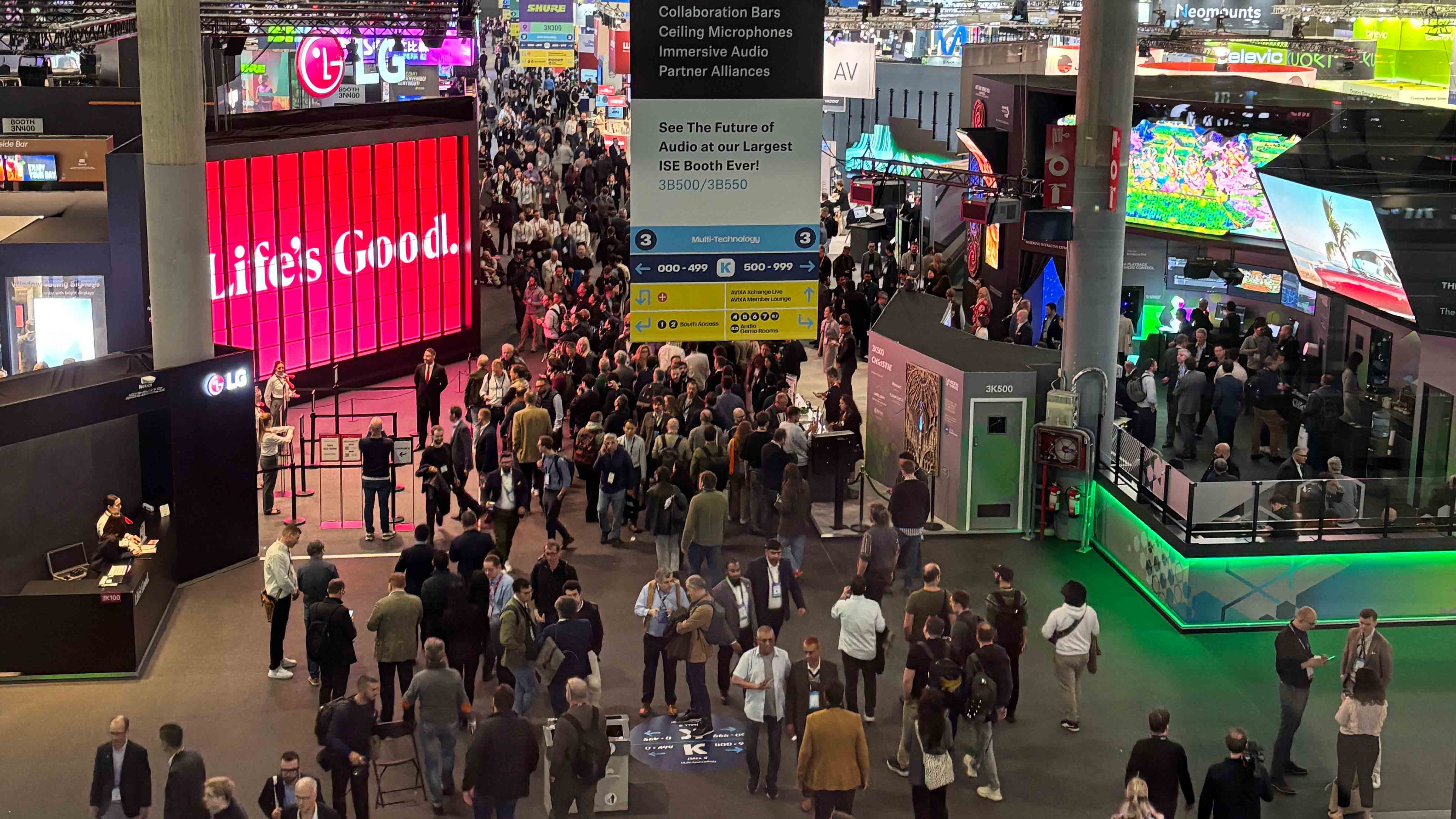ISE 2025 is in the books. Built around a theme of "Connection Restored," it was a four-day, Barcelona-based blur of eye-catching displays, packed exhibit halls, and a sizable program of educational sessions.
Before I drill down on a few trends, let's look at the scorecard. According to ISE show officials, the 2025 show was the most successful ISE to date, crushing records left and right. Co-owned by AVIXA and CEDIA, ISE 2025 hosted a record 1,605 exhibitors across a show floor that expanded by about 12% in size. There were 85,351 unique verified visitors (up 15%) from 168 countries.
"ISE 2025 has surpassed all expectations, setting new milestones in both attendance and innovation," said Mike Blackman, managing director of Integrated Systems Events. “The energy and engagement from our attendees and exhibitors have been truly remarkable. From the dynamic show floor and impactful exhibitor showcases to a content-rich program, this year’s edition has delivered an unmatched experience."
I'm inclined to agree. Similar to last year, there was no Next Big Thing on the show floor, but there were plenty of refinements to existing solutions. Yes, AI is still the buzzword du jour, but isn't the only topic that was generating interest at the show.
Sensors working overtime.
I think we'll be talking about return to office for years, and I don't think it's going to become any less important. Part of that return is making sure office space is being used productively and efficiently, and sensors are part of the equation.
But it's not just about keeping track of room usage. Some of these sensors are providing environmental data as well, such as room temperature and CO2 levels. That's right, folks, Pro AV solutions are helping employers take better care of their employees—or at least monitor working conditions to maximize productivity, depending on your level of cynicism.
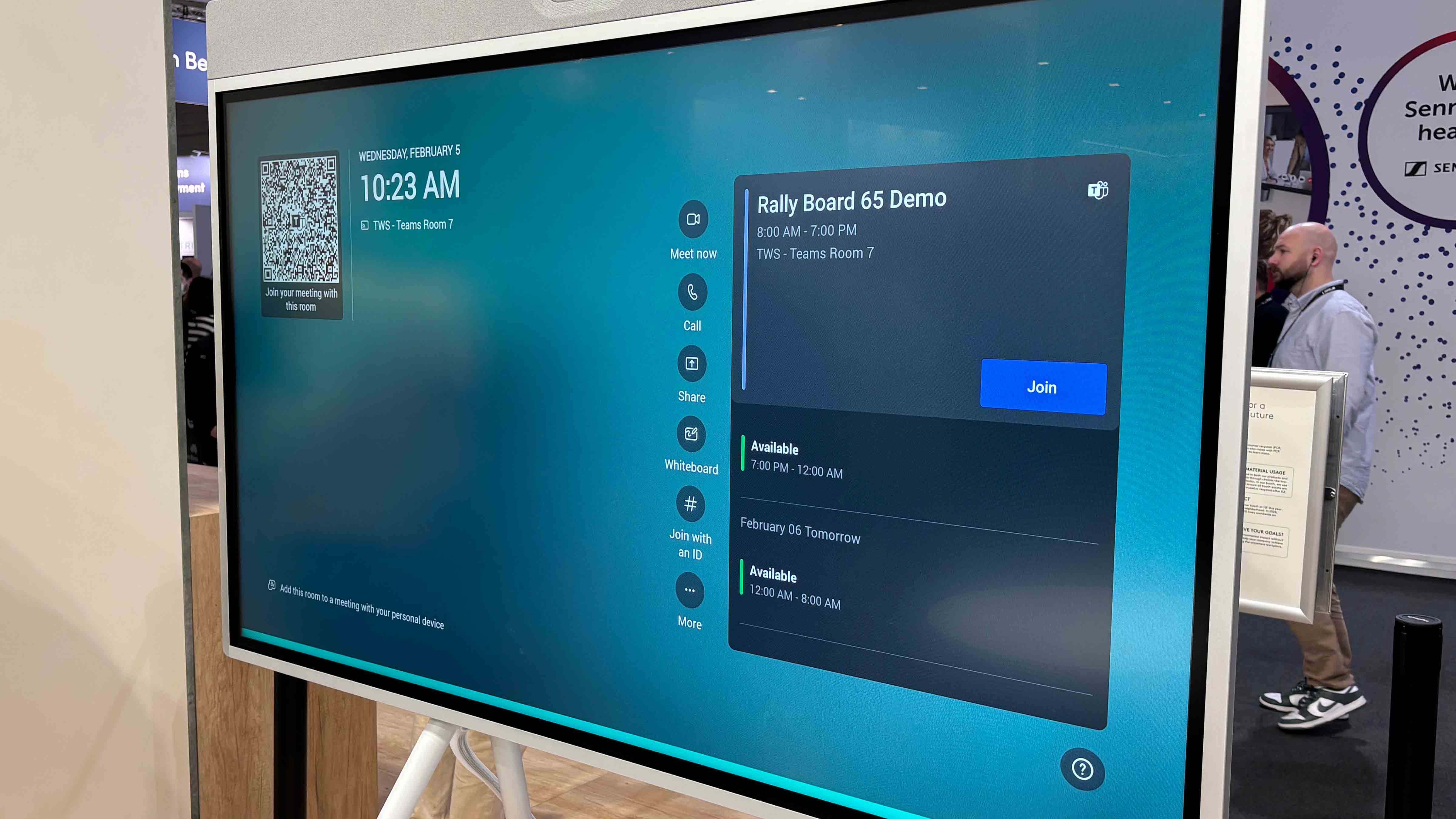
One of the biggest examples of sensor integration, literally, was Logitech's new Rally Board 65, an all-in-one videoconferencing board. Among its bells and whistles are built-in occupancy sensors that work with the Logitech Sync device and space management software. The company also introduced Logitech Spot, a standalone occupancy and environmental sensor that also feeds its data back to Sync.
Humly is known for its hardware and software solutions for booking anything from a desk to an office to a parking spot. Now, it offers occupancy sensors that detect when a person enters a phone booth-style meeting space, triggering the space's Humly Booking Device to "booked" mode (and changing its color from green to red). Another sensor measures environmental conditions including air quality, humidity, and more. That data can be seen on the Humly Room Display or monitored within the Humly Control Panel.
Videobars are getting bigger by getting … smaller.
Following InfoComm 2023, I wrote that videobars were one of the hottest product categories in Pro AV. That showed no signs of changing at ISE 2025.
As Boom Collaboration's Chris Widocks reminded me, convenience is a compelling selling point. Videobars provide an all-in-one solution, with built-in video cameras, microphones, and speakers. Just add a display and you're ready to go. You can also accessorize your videobar; in fact, Boom offers expansion microphones, so you can make sure that quiet CEO on the far end of the conference table can be heard by the satellite office attendees.
But what I didn't see coming for 2025 was an influx of smaller videobars.
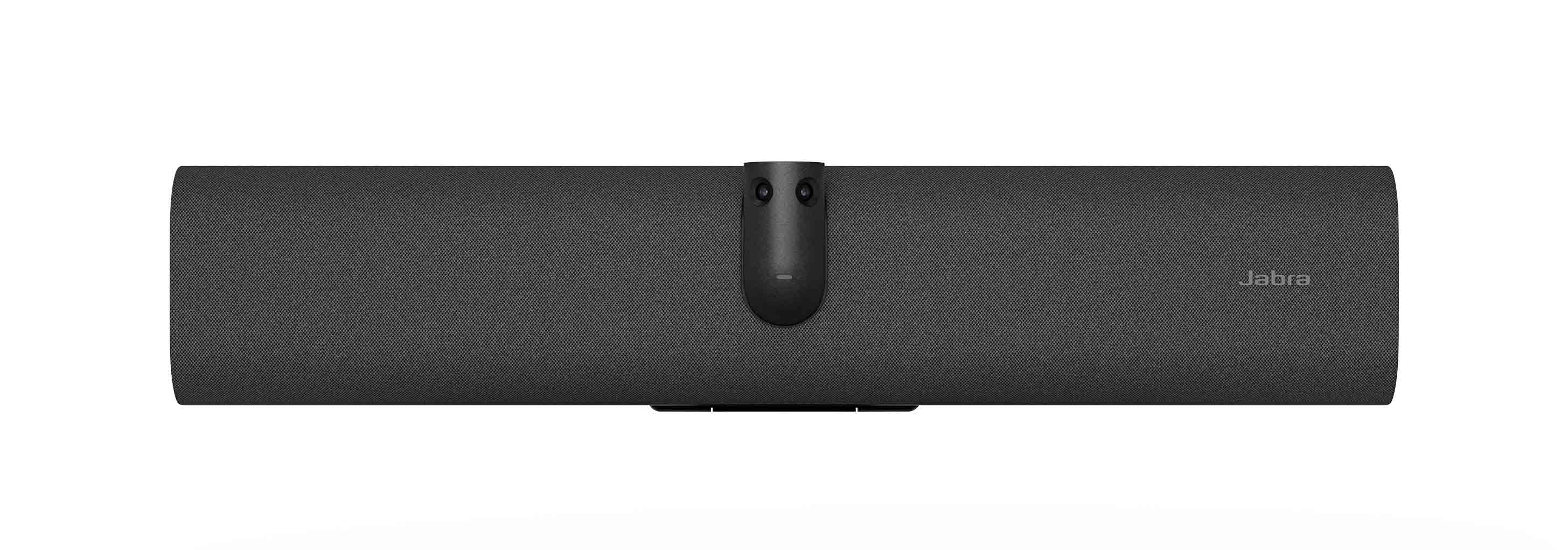
For example, Jabra unveiled its PanaCast 40 VBS, which will be available later this year. Significantly smaller than the PanaCast 50 VBS, the new Android-based videobar was specifically designed for smaller collaborative spaces, such as huddle rooms. Of course, it's still a Jabra, so you're getting plenty of features, including dual cameras for a 180-degree field of view and six microphones so the folks on the other end of the videoconference will hear every word.
[SCN Hybrid World: Videobars Offer Simplified Conferencing Solution]
HP Poly had its own big/small news with the Poly Studio V12, a sub-$1,000 entry that sports a 4K, 20 MP camera, four mics, and stereo speakers. At the show, I talked with Andie Mace, senior manager, hybrid systems. She said the new videobar was developed specifically to increase penetration in smaller rooms. "Our goal is to be able to offer that premium, second-generation audio and video experience but in a simpler space at a lower cost," she added.
Prediction: Here comes epaper.
Since I'm feeling pretty good about my videobar track record, it's once again time to test my powers of prognostication: Between sustainability efforts and improving technologies, the proverbial stars are beginning to align for epaper.
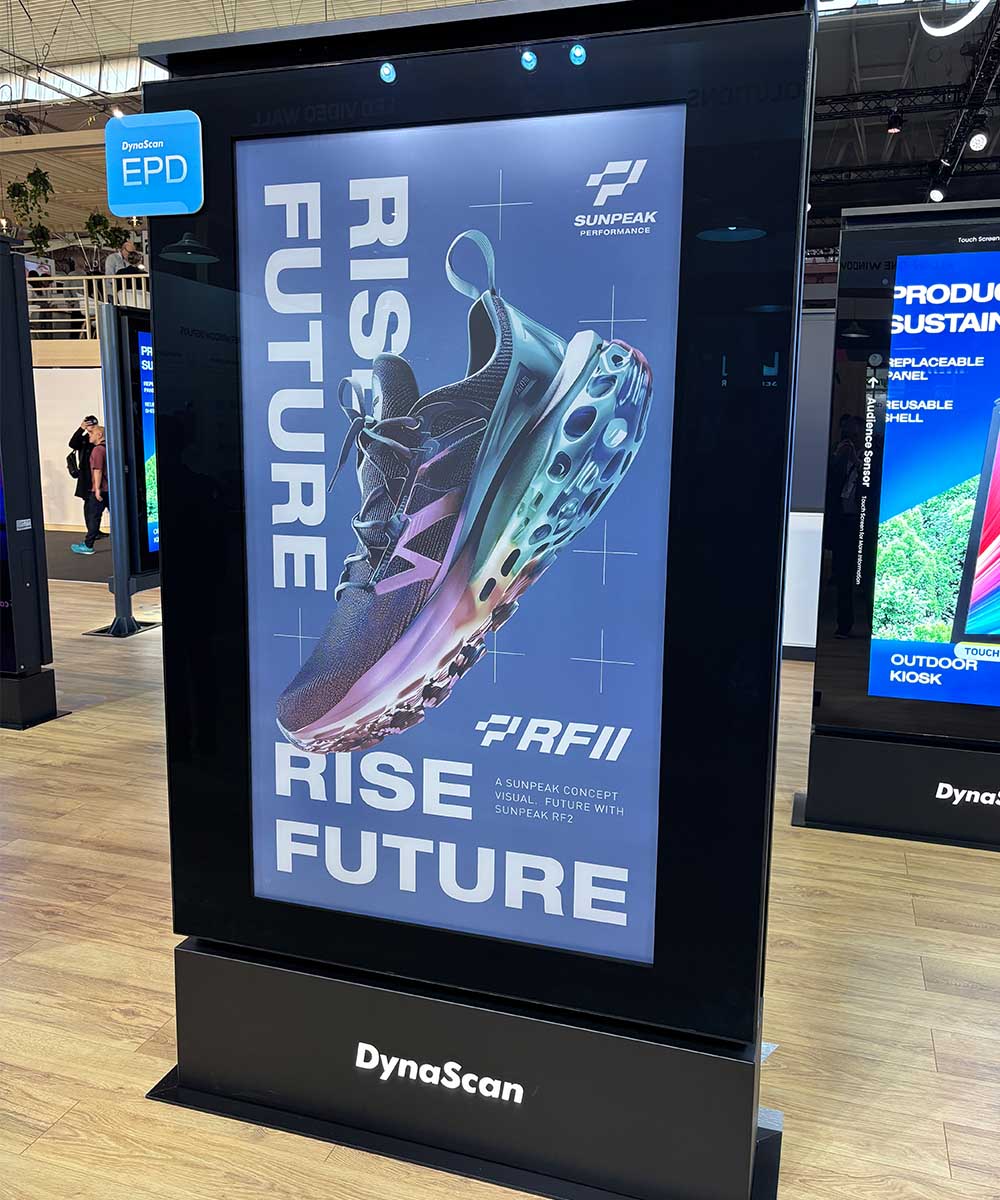
Martjin van dar Woude, VP of global business development and marketing at Philips Professional Displays, admitted sales have not been great to this point; high prices and a lack of well-defined use cases have certainly impeded its progress. But all that is about to change. Epaper options were all over ISE (yes, I saw you, Avocor), and that tells me prices are going to start dropping.
As far as use cases go, let's talk about Dynascan. The company showcased a 75-inch full color epaper display tucked away safe and sound in its Dynascan Kiosk, so it's ready for outdoor digital signage applications. It uses E Ink's Kaleido 3 technology, and I will concede that it fails to reproduce colors as brightly as, say, the smaller epaper solutions in the Philips booth driven by Spectra 6 or Gallery technology, depending on the model. But did I mention it was 75 inches and, ahem, no one in their right mind is going to install it next to a full-motion 4K LED in the field?
[The Integration Guide to Digital Signage 2024]
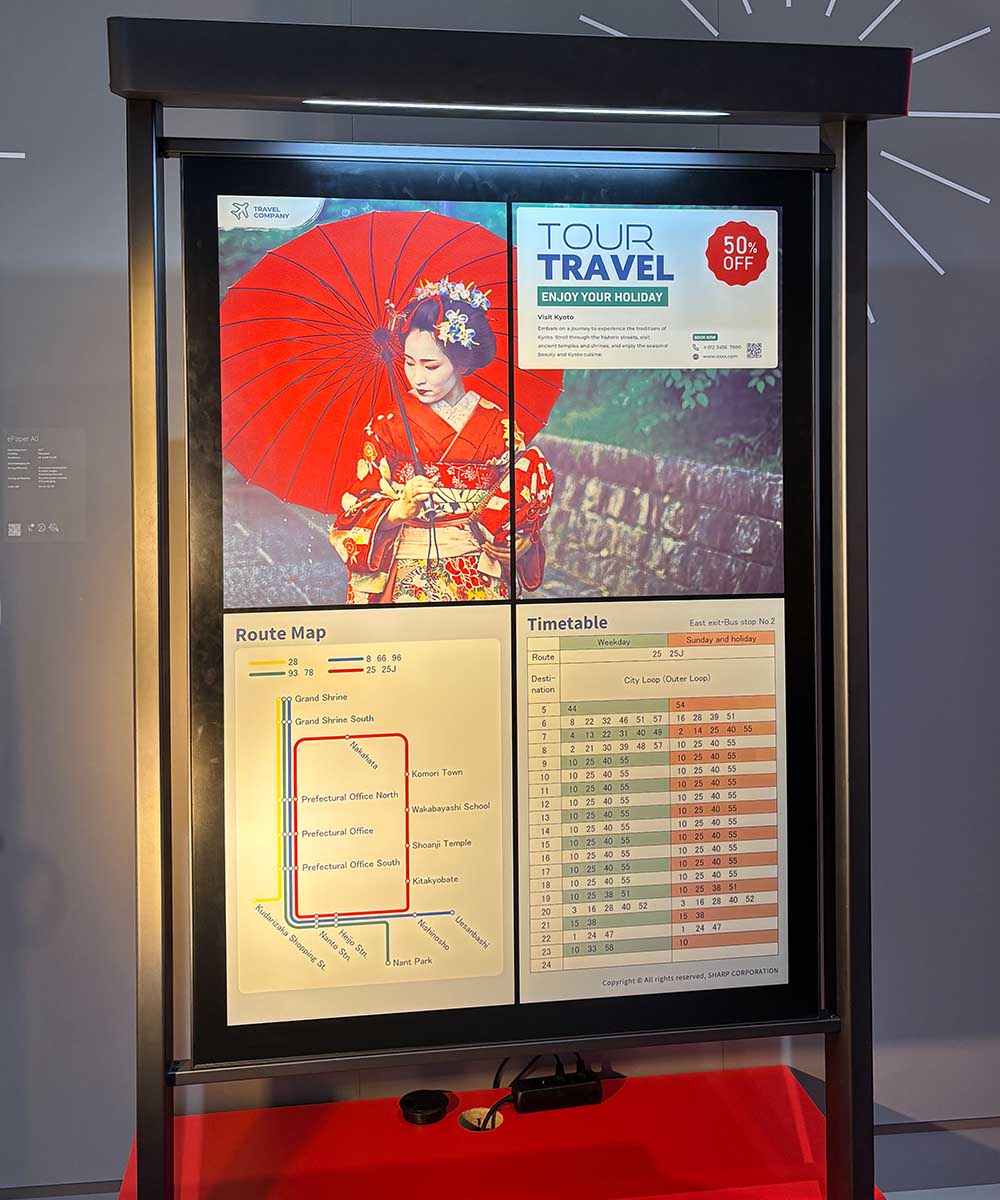
Meanwhile, Sharp had its own wicked smart epaper outdoor signage demo. The company announced its first epaper solutions at ISE, three models of various sizes. Then, it took four of its midsized displays and stacked them 2x2 in a solar-powered outdoor signage kiosk. The result was a multi-window epaper digital signage solution. Change each of those displays at staggered intervals and suddenly you have a dynamic digital bulletin board, one that's not drawing any power but is drawing interest from foot traffic.
Remember, epaper as a digital signage solution is still in its infancy. This is the worst it's ever going to look—and it already looks pretty good. Plus, panels are only going to get larger, more vibrant, and more capable. We're even starting to see some very creative use cases, at least on the trade show floor. Expect a breakthrough in the next two years.
